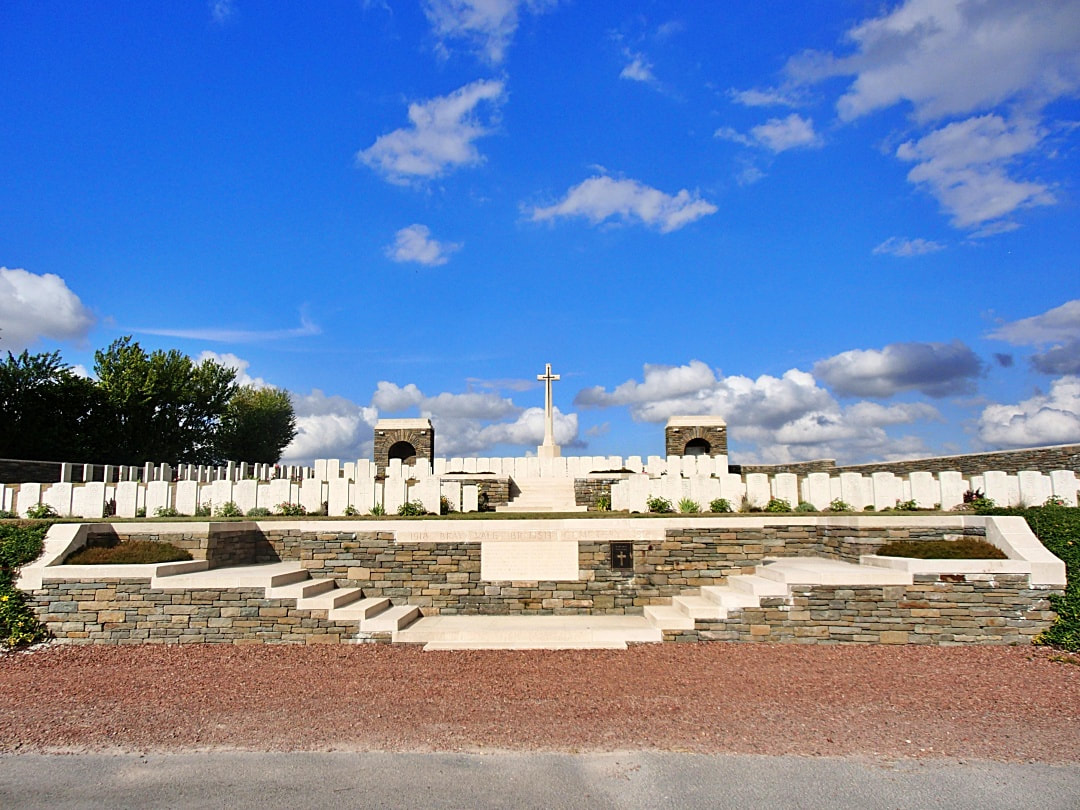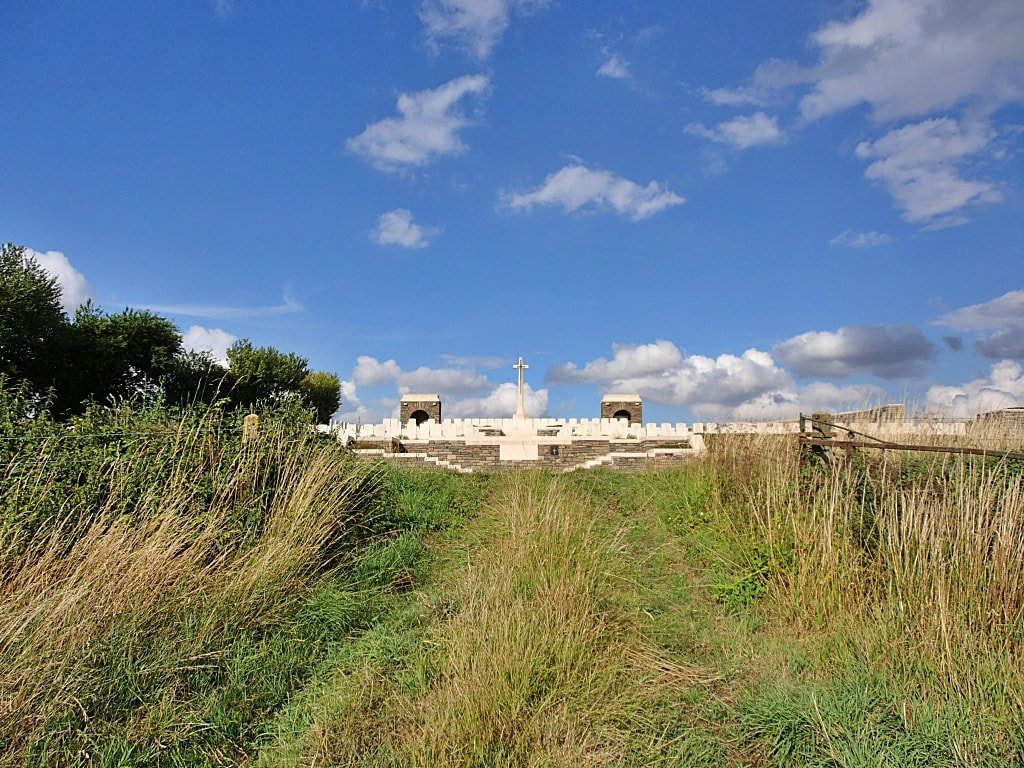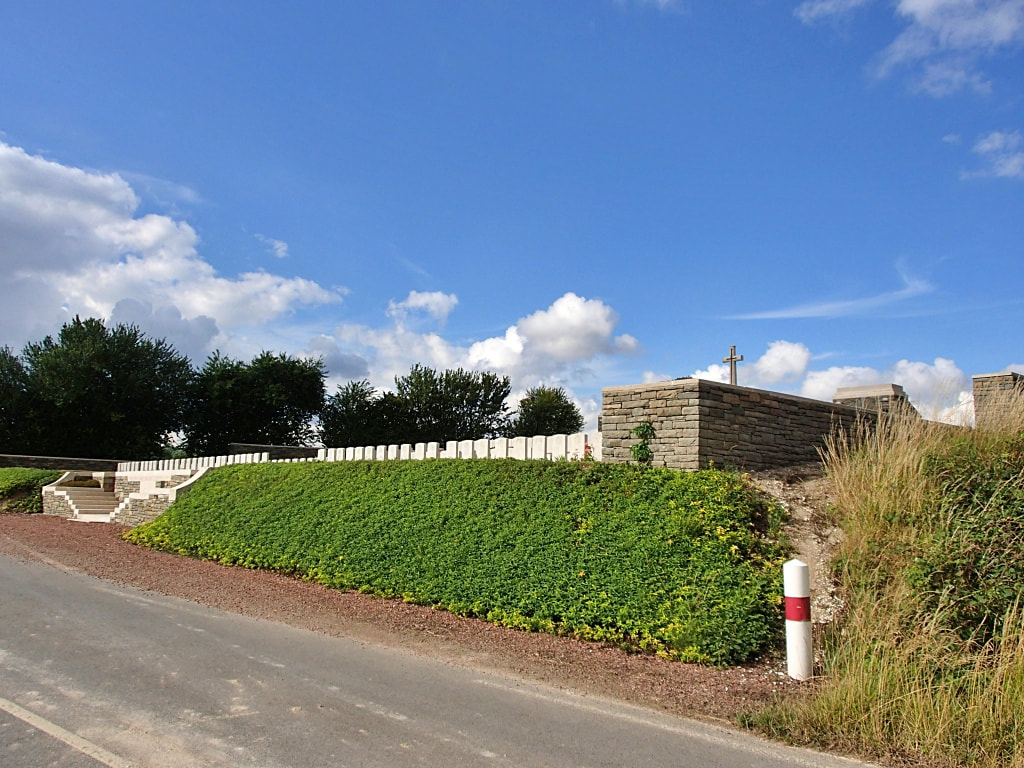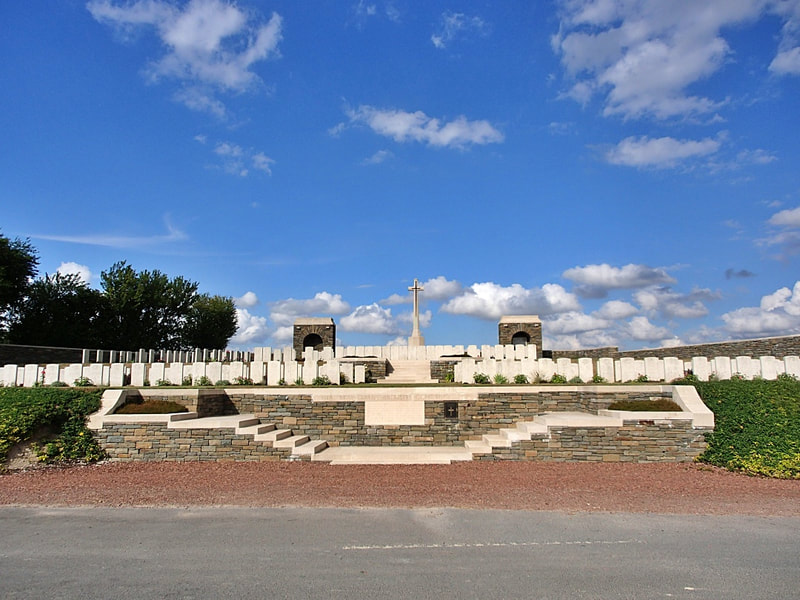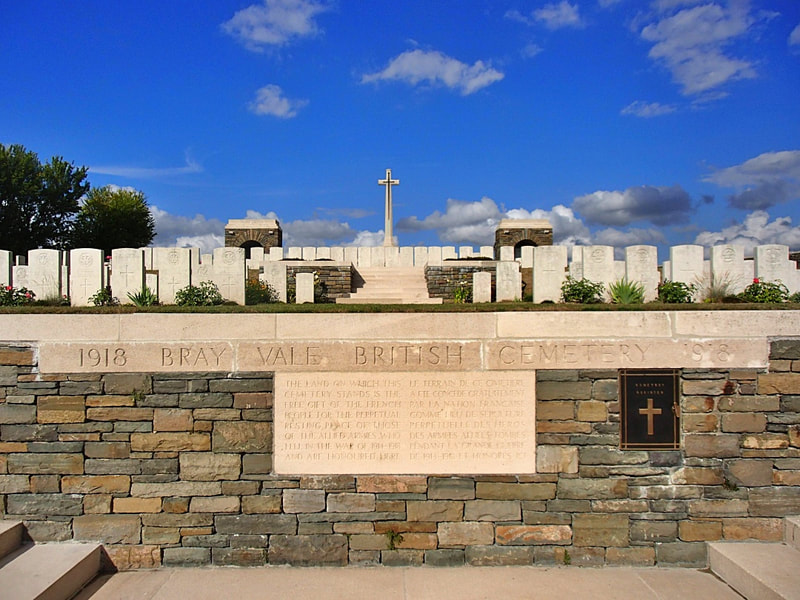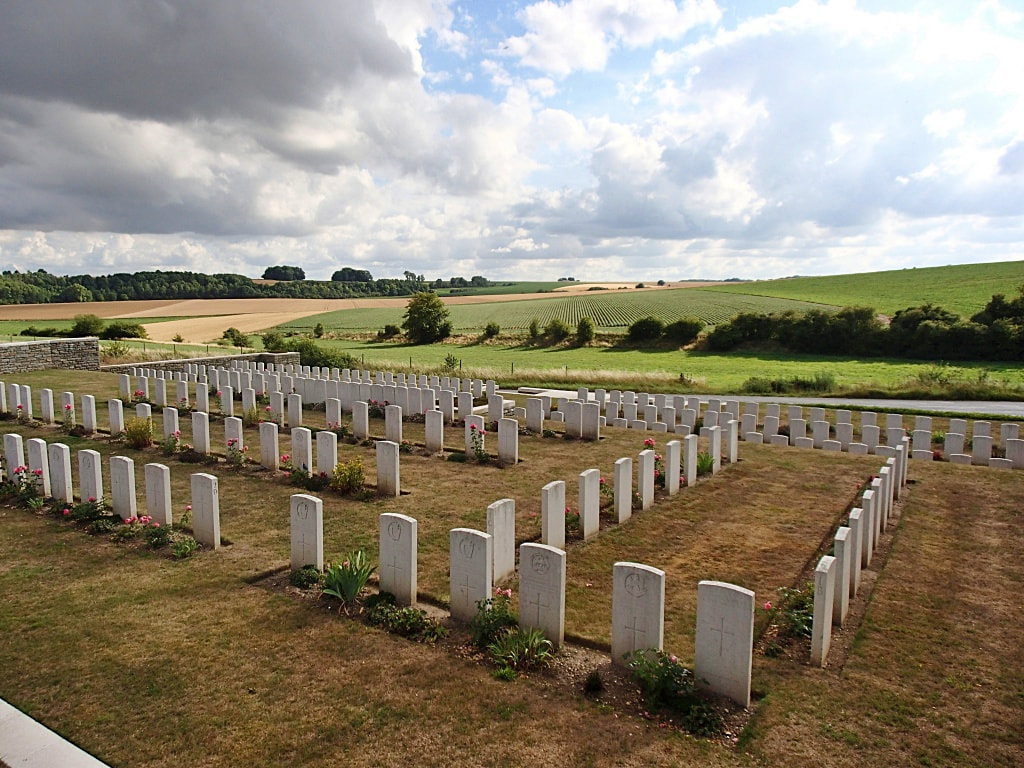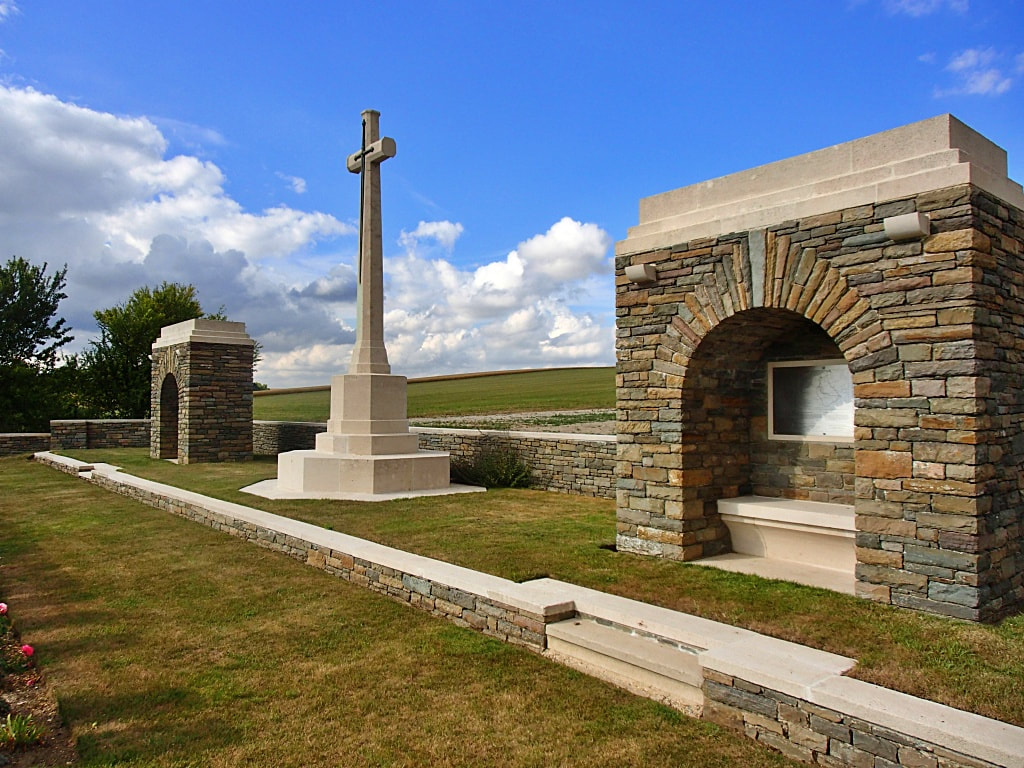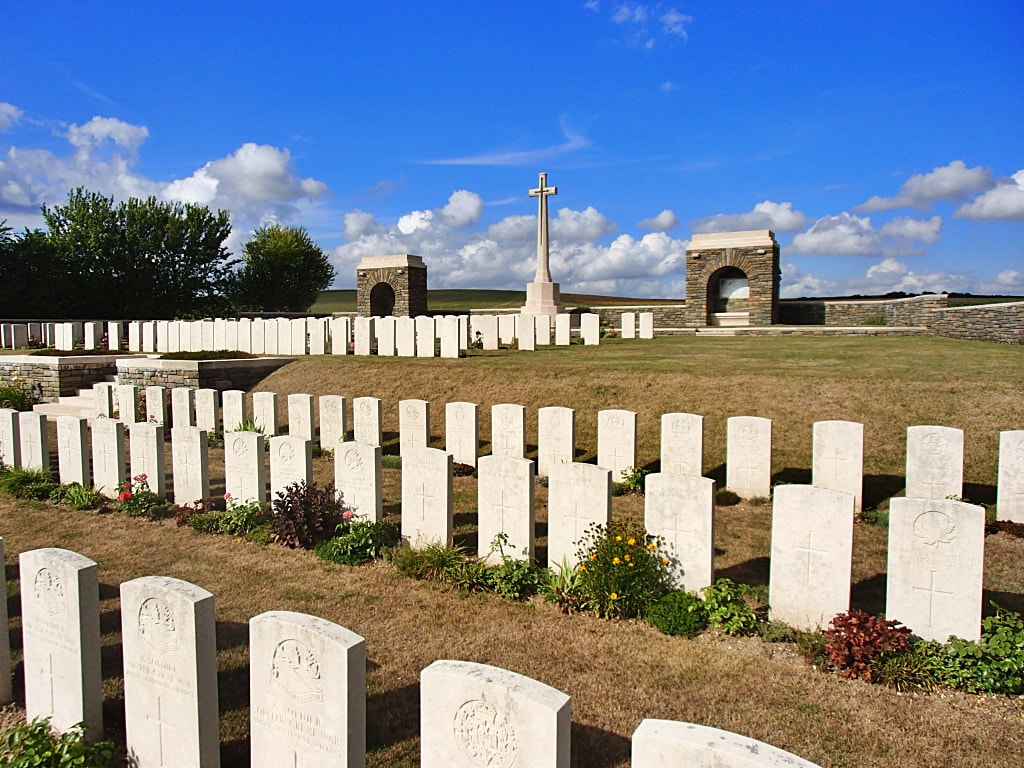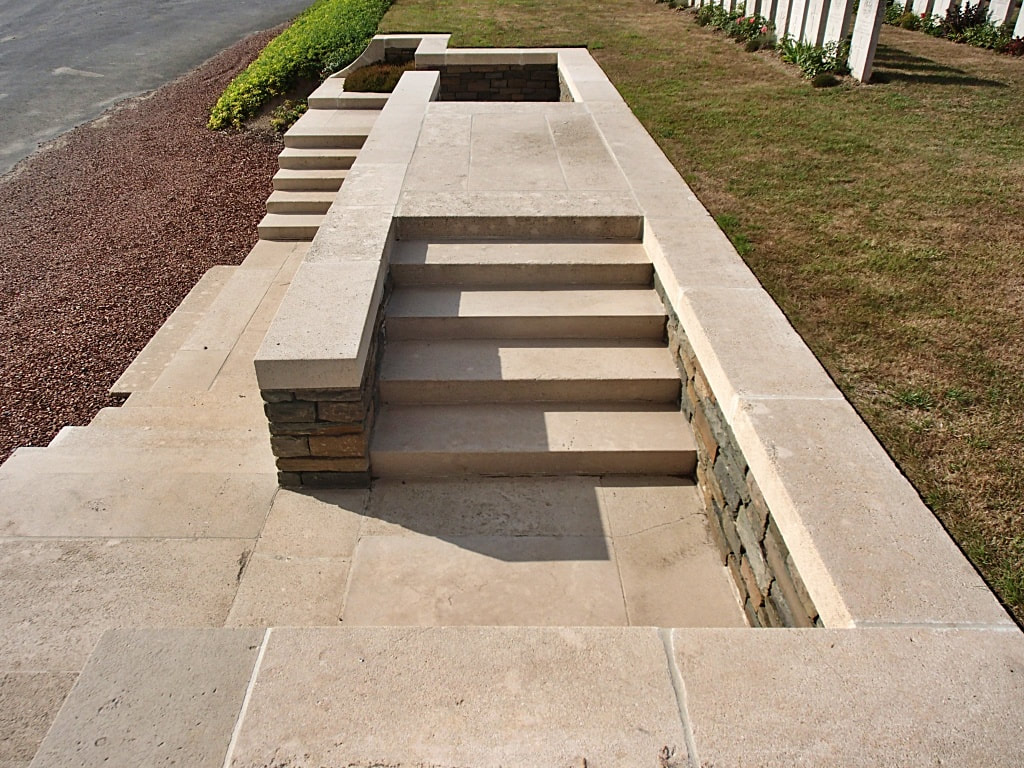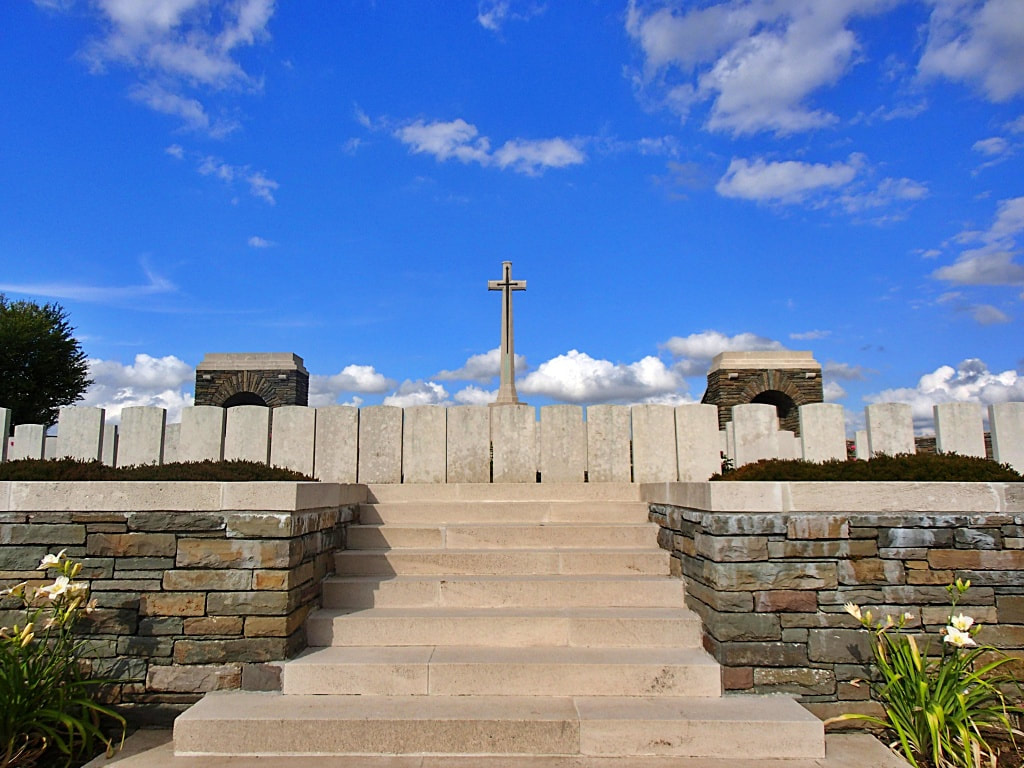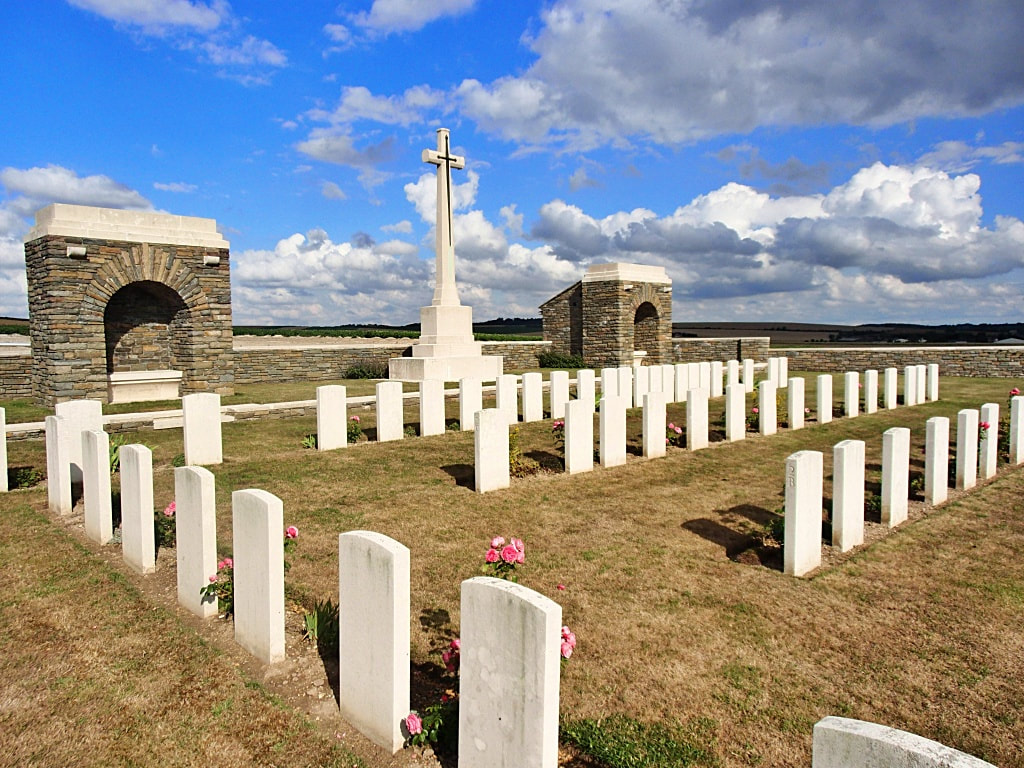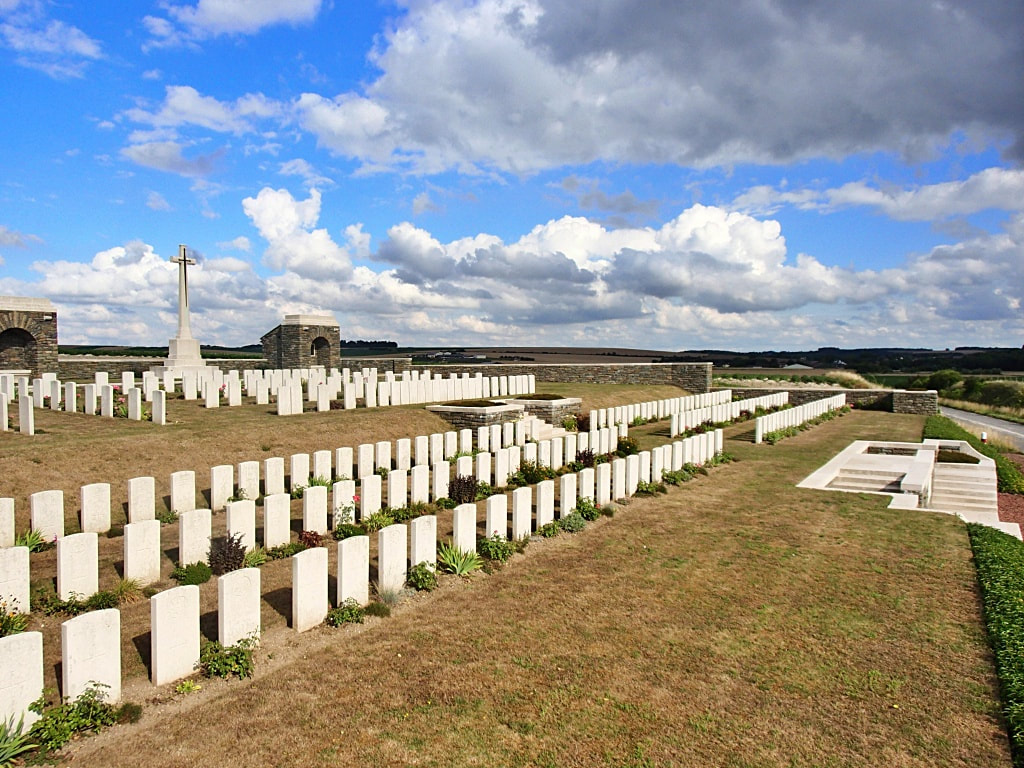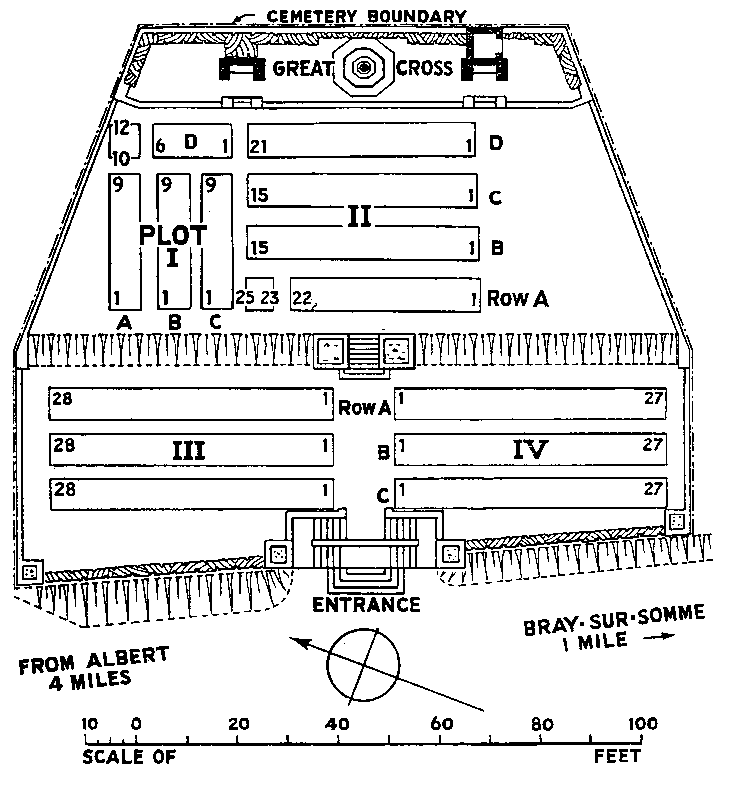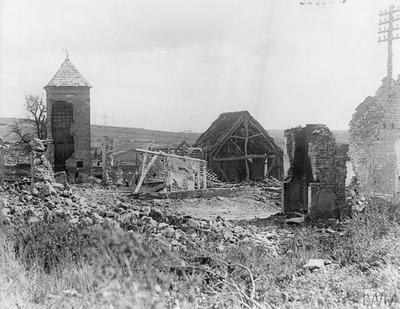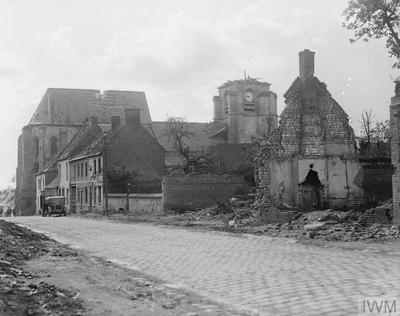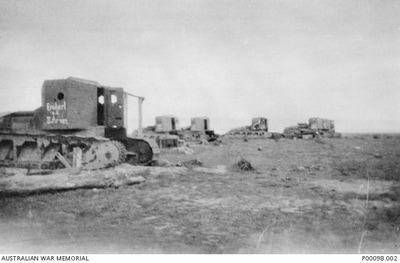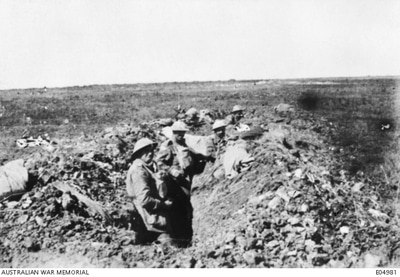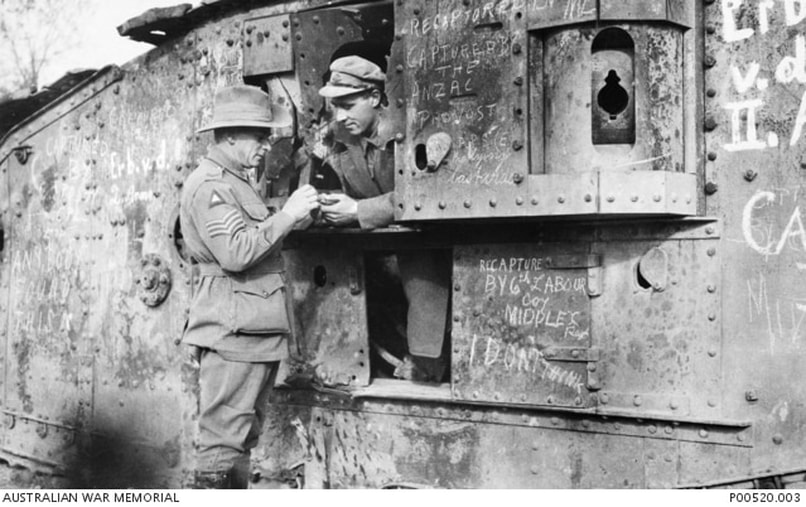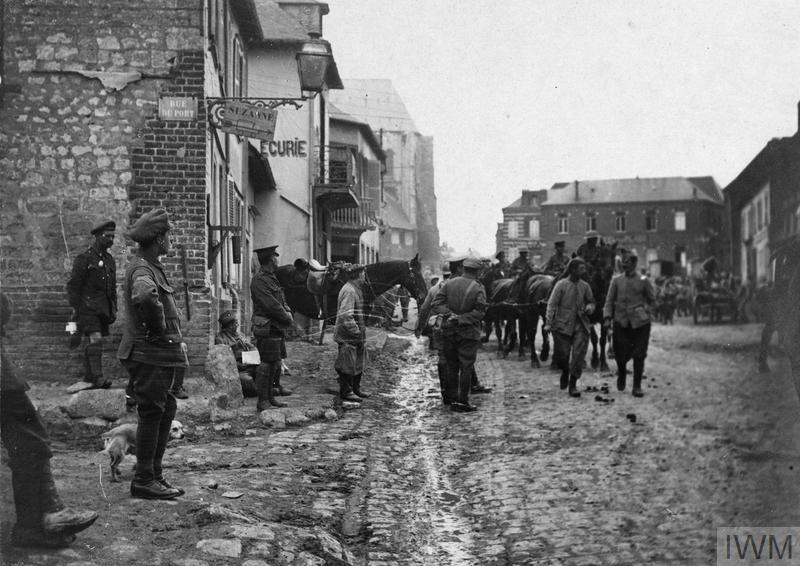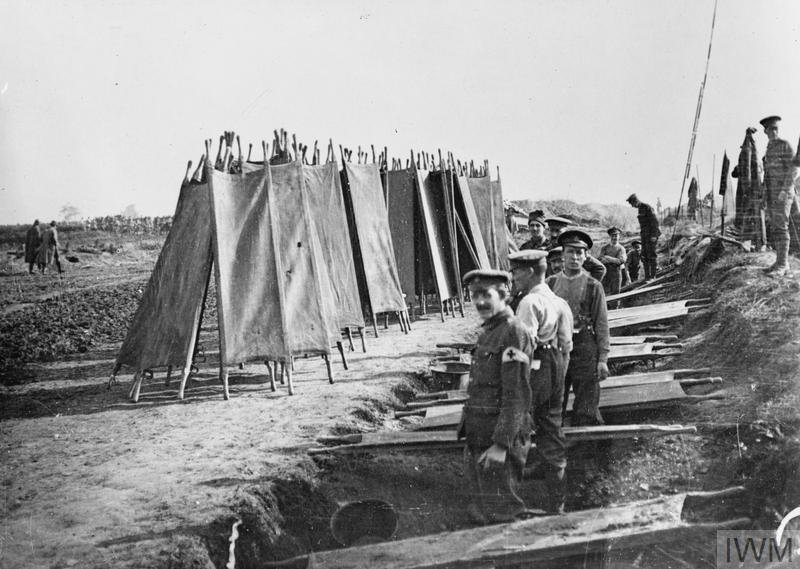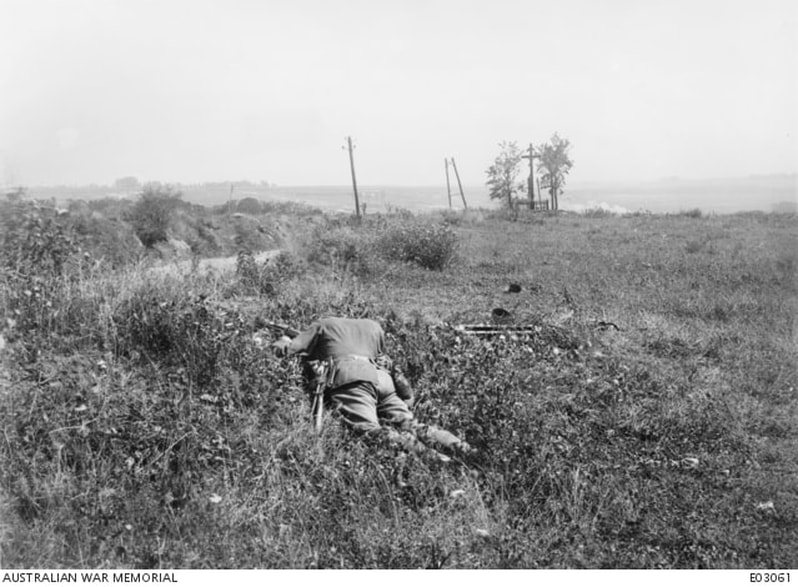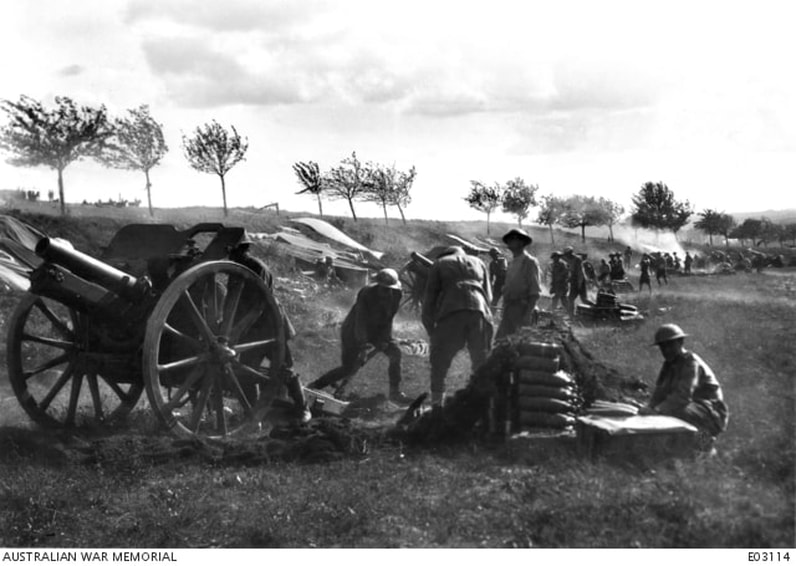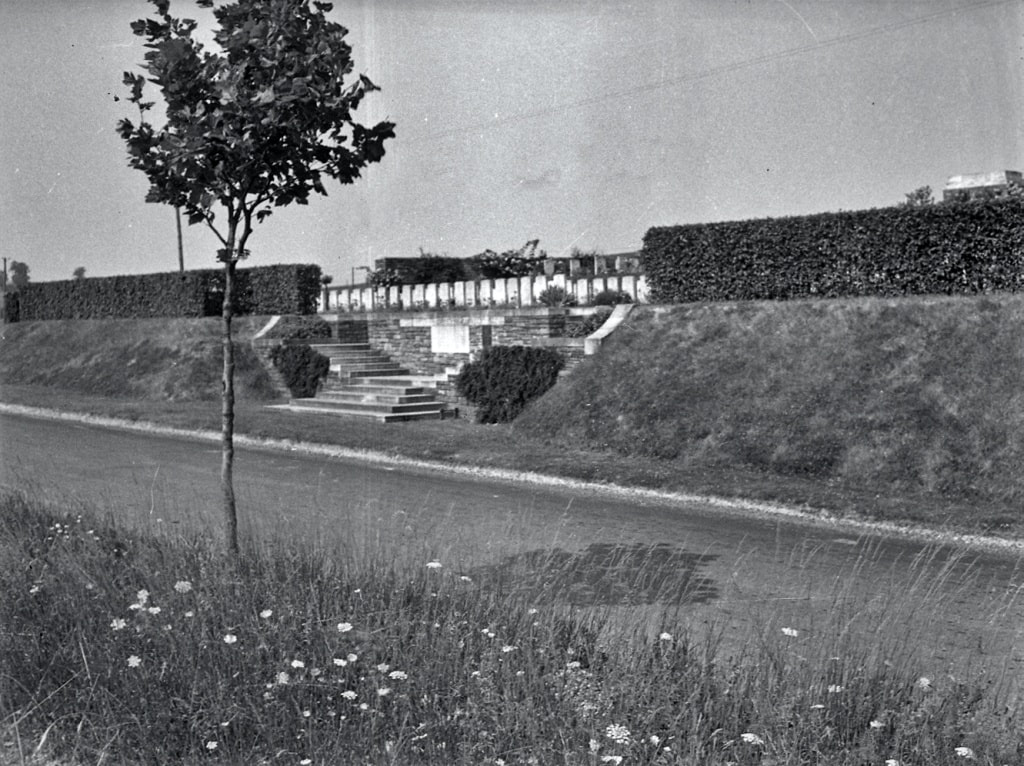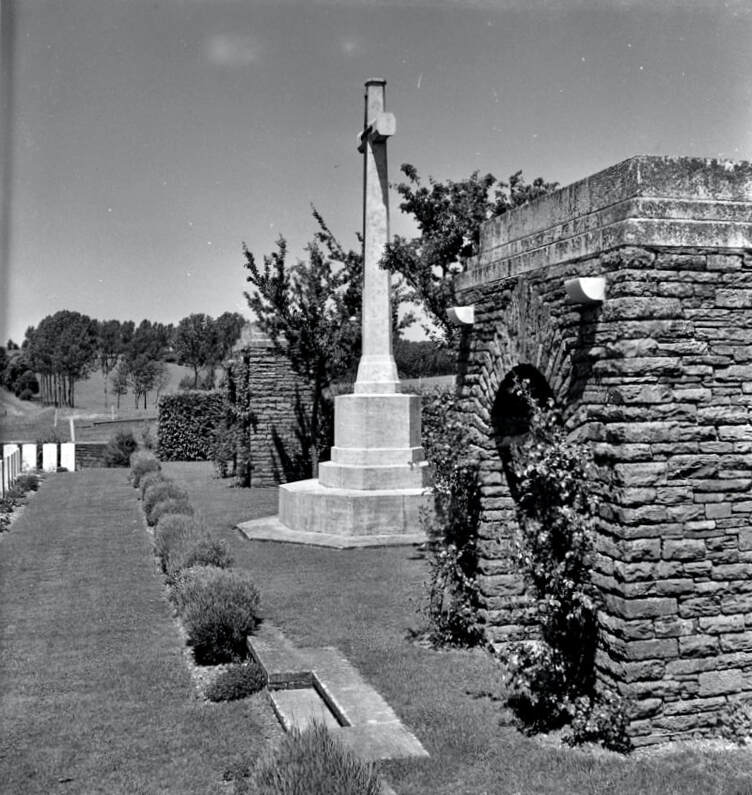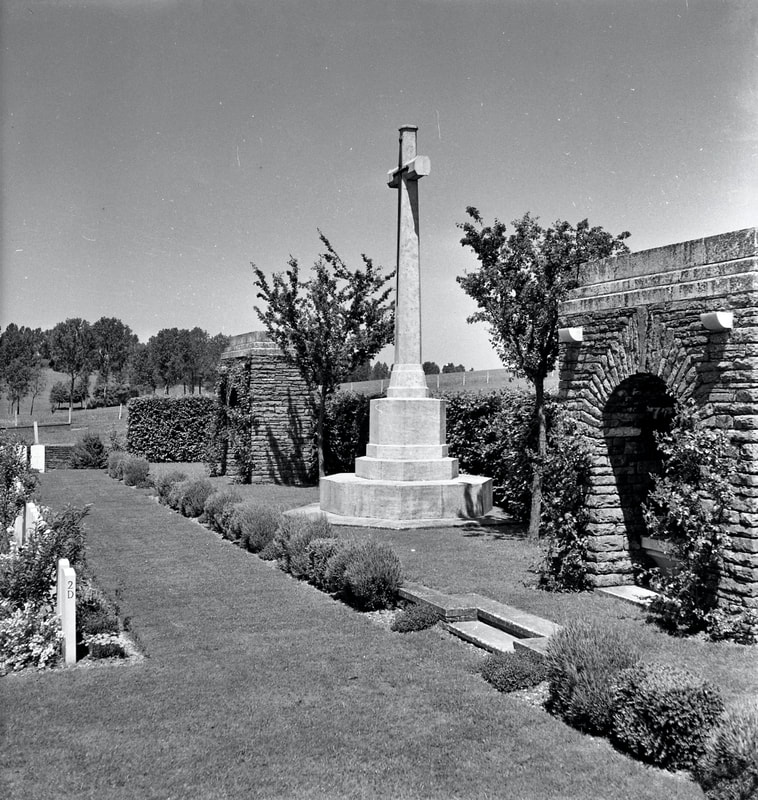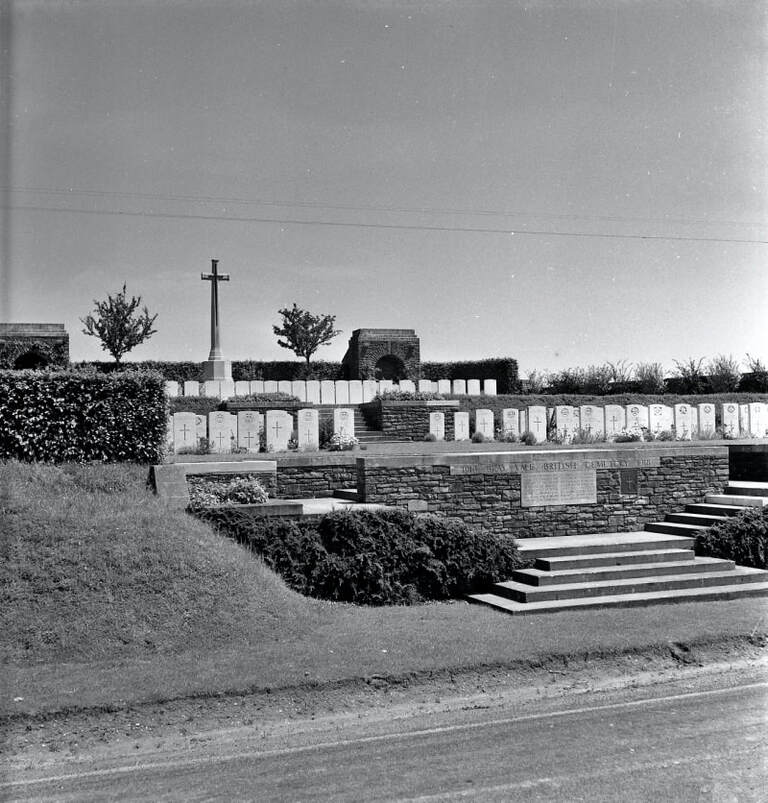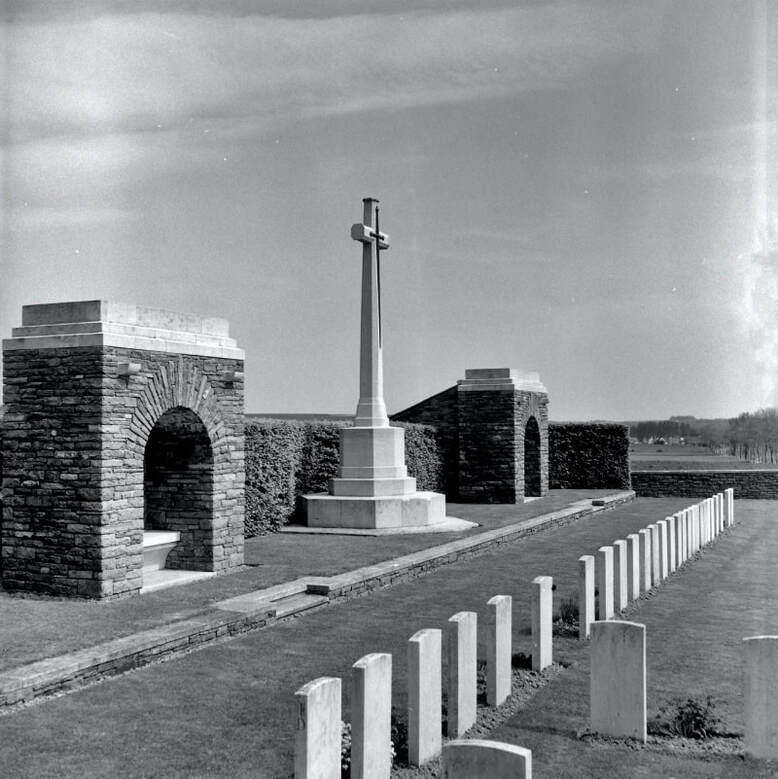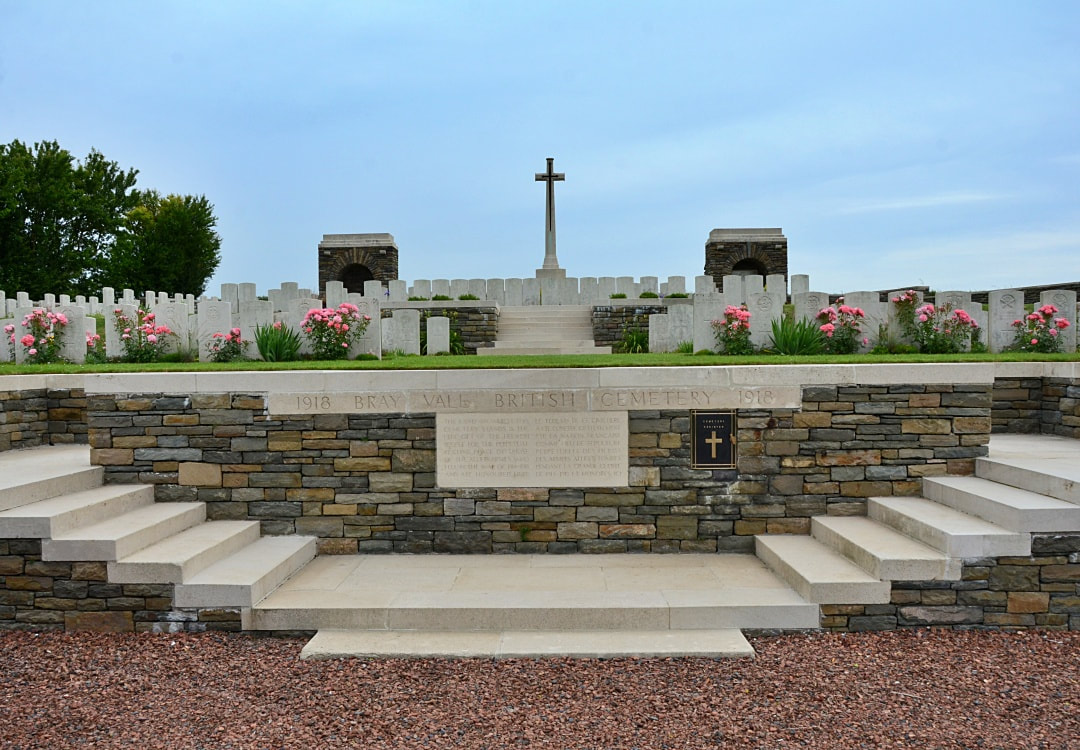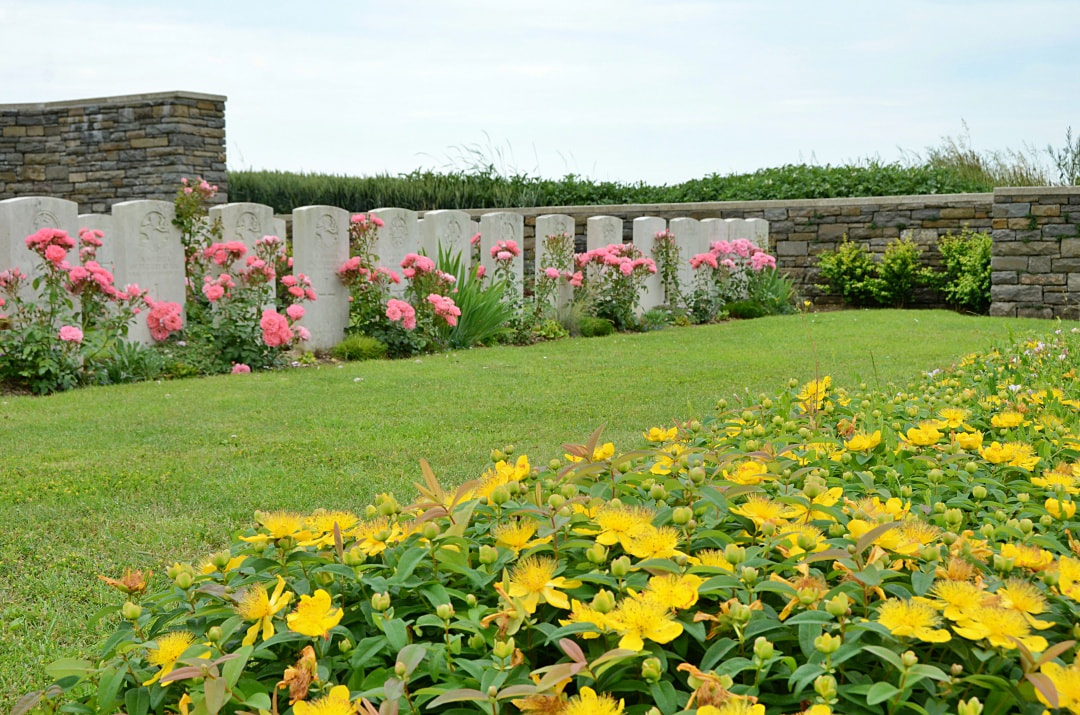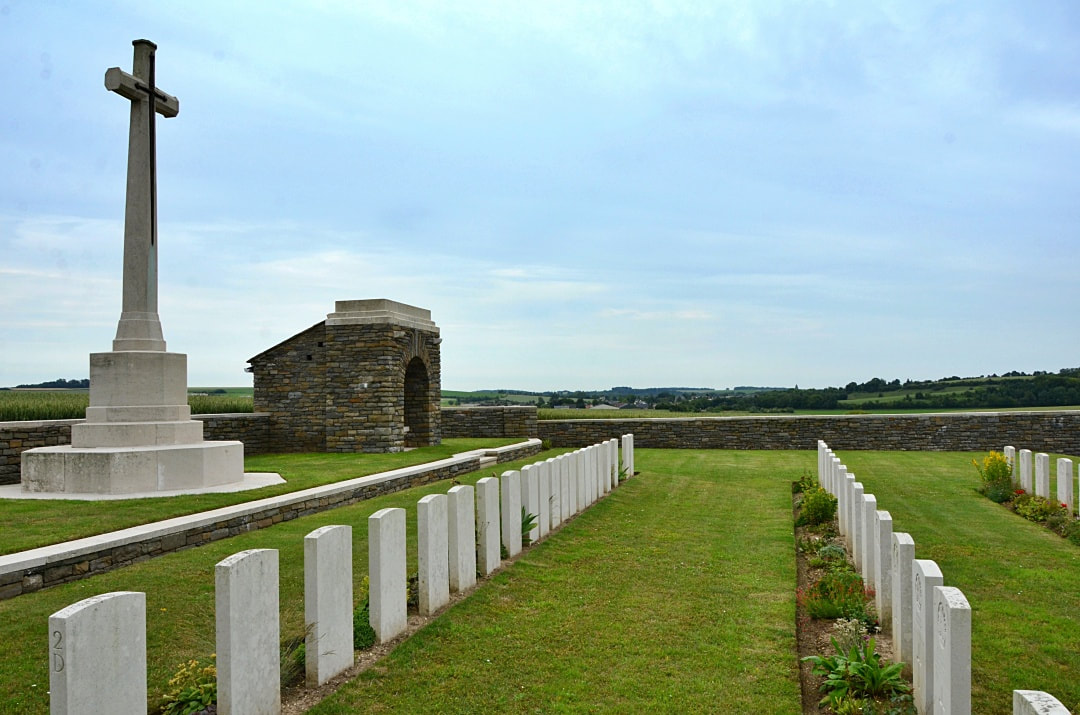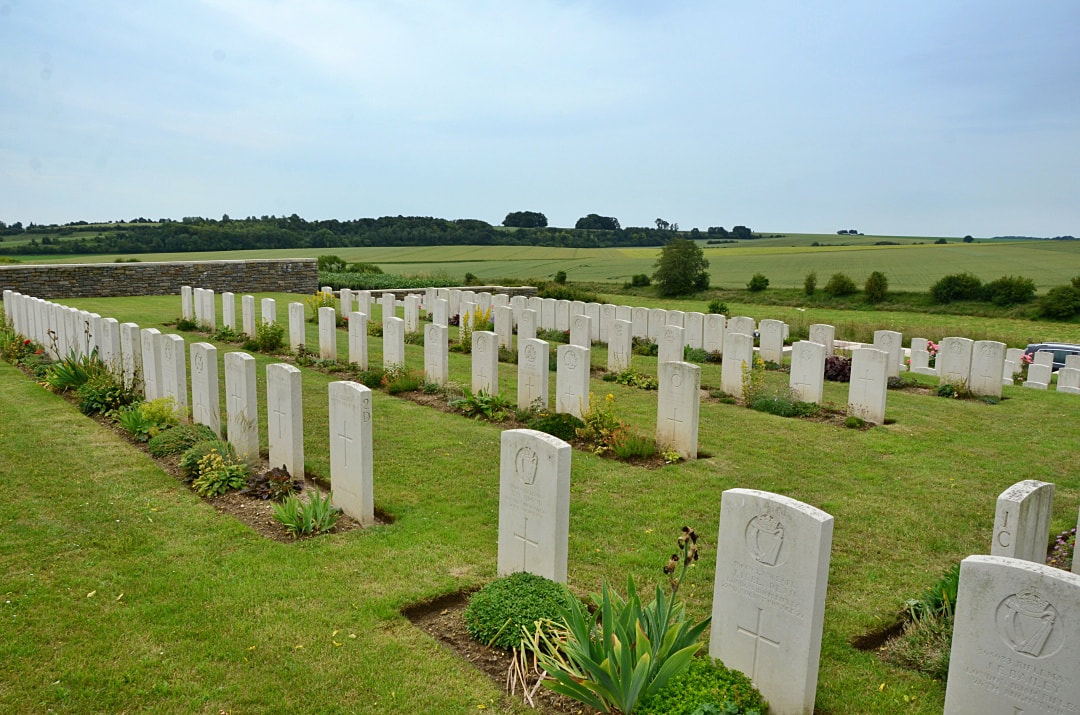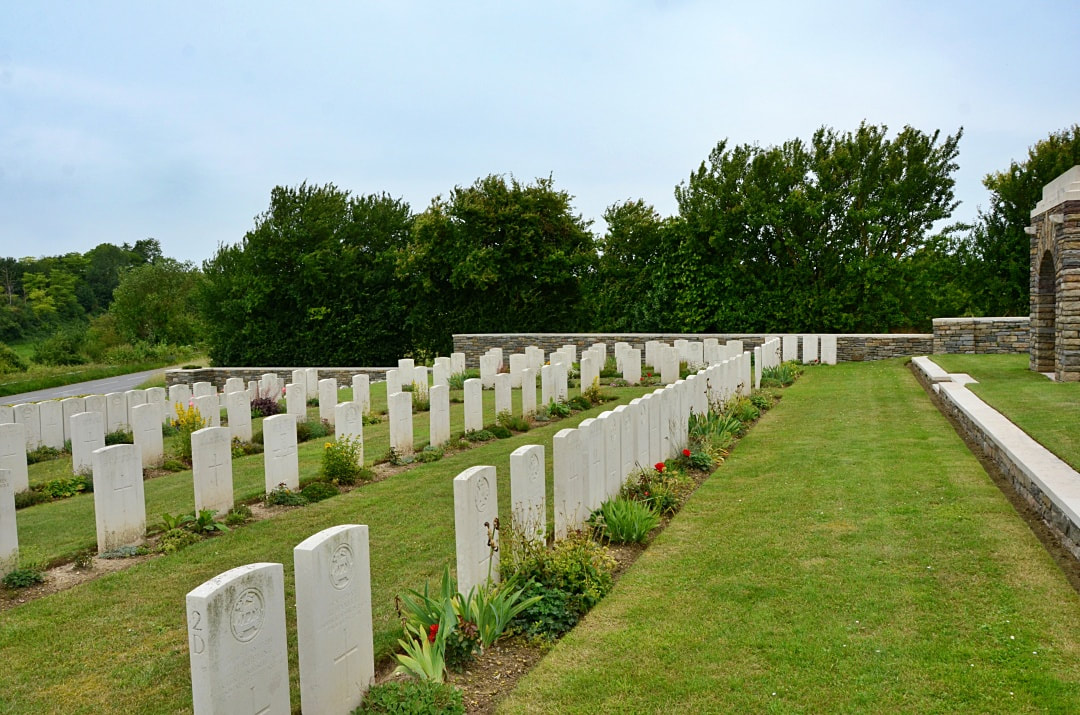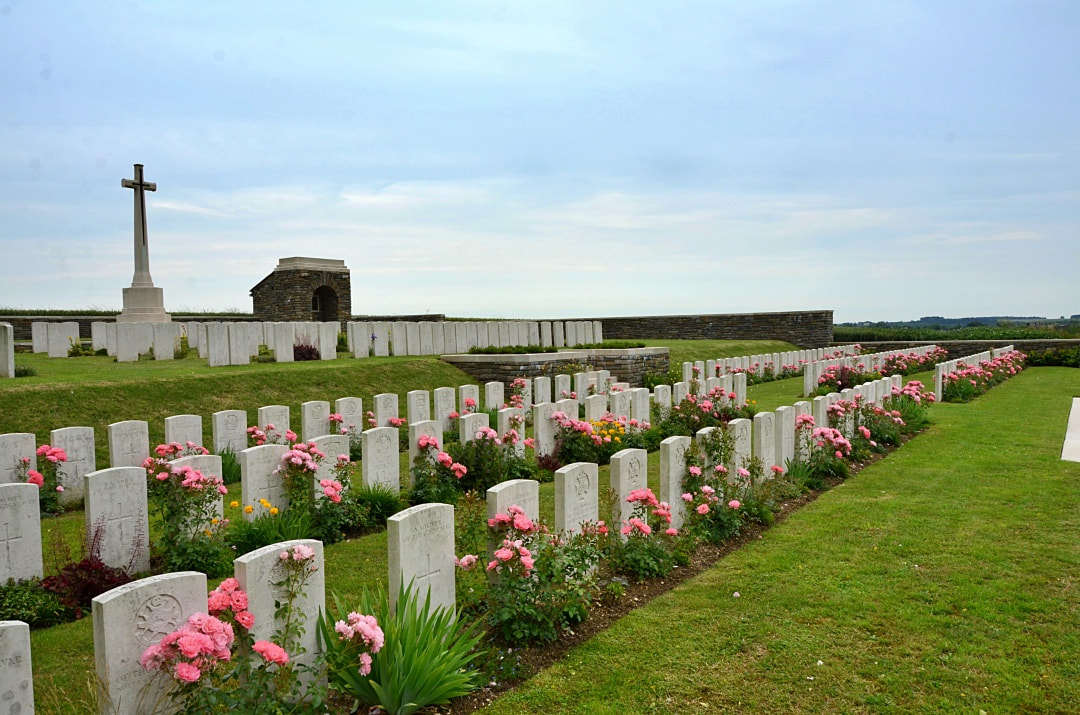BRAY VALE BRITISH CEMETERY
Somme
France
GPS Coordinates - Latitude: 49.95501, Longitude: 2.70768
Location Information
Bray-sur-Somme is a village and commune in the Department of the Somme, 8 kilometres south-east of Albert and 16 kilometres west of Peronne. Bray Vale British Cemetery is on the east side of the town of Albert.
Visiting Information
The location or design of this site makes wheelchair access impossible.
Historical Information
Bray-sur-Somme fell into German hands in March 1918, but it was retaken by the 40th Australian Battalion on the following 24 August.
Bray Vale British Cemetery (called at one time Bray No.2 British Cemetery) consisted originally of the 25 graves (of August 1918) in Plot II, Row A, but it was enlarged soon after the Armistice when further graves were brought in from the neighbourhood. In 1923 the space between the cemetery and the road, now Plots III and IV, was filled by graves brought in mainly from the battlefields of 1916 round Thiepval and Courcelette.
The cemetery contains 279 First World War burials, 172 of them unidentified.
Commonwealth Identified Casualties: United Kingdom 94, Australia 13, Total 107.
Commonwealth Unidentified Casualties: United Kingdom 164, Australia 4, Canada 1, Unknown 3. Total 172.
The cemetery was designed by A J S Hutton
Bray-sur-Somme is a village and commune in the Department of the Somme, 8 kilometres south-east of Albert and 16 kilometres west of Peronne. Bray Vale British Cemetery is on the east side of the town of Albert.
Visiting Information
The location or design of this site makes wheelchair access impossible.
Historical Information
Bray-sur-Somme fell into German hands in March 1918, but it was retaken by the 40th Australian Battalion on the following 24 August.
Bray Vale British Cemetery (called at one time Bray No.2 British Cemetery) consisted originally of the 25 graves (of August 1918) in Plot II, Row A, but it was enlarged soon after the Armistice when further graves were brought in from the neighbourhood. In 1923 the space between the cemetery and the road, now Plots III and IV, was filled by graves brought in mainly from the battlefields of 1916 round Thiepval and Courcelette.
The cemetery contains 279 First World War burials, 172 of them unidentified.
Commonwealth Identified Casualties: United Kingdom 94, Australia 13, Total 107.
Commonwealth Unidentified Casualties: United Kingdom 164, Australia 4, Canada 1, Unknown 3. Total 172.
The cemetery was designed by A J S Hutton
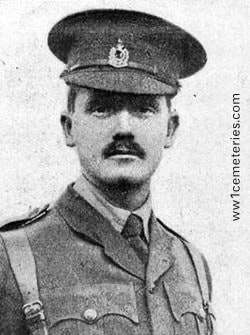
Lieutenant
Alfred Gordon Farleigh, M. C.
33rd Bn. Australian Infantry, A. I. F.
22nd August 1918, aged 32.
Plot II. B. 4.
Son of Edward Manicom Farleigh and Elizabeth Farleigh. Native of Arncliffe, New South Wales.
His headstone bears the inscription "Great Is Our Sorrow Greater Yet Our Pride O Gallant Hearts In You"
With seven years service in the Citizens' Military Forces (CMF), Alfred Farleigh enlisted as a Lieutenant (Lt) in March 1916 and left Australia for England with the 2nd Reinforcements of the 33rd Battalion in August 1916. After arriving in France for service on the Western Front in December 1916. he was sent to England and transferred to the 61st Battalion as part of the newly raised 6th Division in March 1917. When the Division was disbanded without active service, Lt Farleigh returned to the 33rd Battalion in October 1917. After being awarded the Military Cross (MC) for "conspicuous gallantry on the night of 4/5th March, 1918 during a raid on enemy trenches in the vicinity of Warneton", Lt Farleigh was gassed at Villers-Bretonneux on 16 April 1918. Lt Farleigh was killed by a artillery fire nine days after rejoining the battalion at Bray-sur-Somme on 22 August 1918, aged 32.
Alfred Gordon Farleigh, M. C.
33rd Bn. Australian Infantry, A. I. F.
22nd August 1918, aged 32.
Plot II. B. 4.
Son of Edward Manicom Farleigh and Elizabeth Farleigh. Native of Arncliffe, New South Wales.
His headstone bears the inscription "Great Is Our Sorrow Greater Yet Our Pride O Gallant Hearts In You"
With seven years service in the Citizens' Military Forces (CMF), Alfred Farleigh enlisted as a Lieutenant (Lt) in March 1916 and left Australia for England with the 2nd Reinforcements of the 33rd Battalion in August 1916. After arriving in France for service on the Western Front in December 1916. he was sent to England and transferred to the 61st Battalion as part of the newly raised 6th Division in March 1917. When the Division was disbanded without active service, Lt Farleigh returned to the 33rd Battalion in October 1917. After being awarded the Military Cross (MC) for "conspicuous gallantry on the night of 4/5th March, 1918 during a raid on enemy trenches in the vicinity of Warneton", Lt Farleigh was gassed at Villers-Bretonneux on 16 April 1918. Lt Farleigh was killed by a artillery fire nine days after rejoining the battalion at Bray-sur-Somme on 22 August 1918, aged 32.
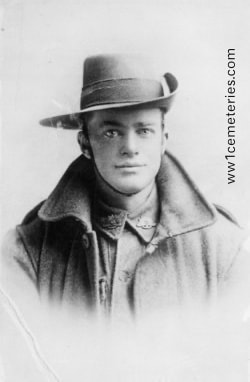
7005 Private
James Patrick Forrester
38th Bn. Australian Infantry, A. I. F.
24th August 1918, aged 26.
Plot I. B. 6.
Son of Richard and Ellen Forrester, of Towaninnie, Victoria, Australia.
His headstone bears the inscription "Have Mercy On Him Oh Lord And Let Perpetual Light Shine Upon Him"
Formerly a farmer, Pte Forrester enlisted on 5 September 1916 and as a member of the 23rd Reinforcements he embarked from Melbourne, Vic, aboard HMAT Hororata (A20) on 23 November 1916. He served later as a Lewis gunner on the Western Front with 38th Battalion, where he was killed in action on 24 August 1918, aged 26.
Killed instantaneously by Machine Gun bullets to the body and head whilst covering the advance with his Lewis Gun.
James Patrick Forrester
38th Bn. Australian Infantry, A. I. F.
24th August 1918, aged 26.
Plot I. B. 6.
Son of Richard and Ellen Forrester, of Towaninnie, Victoria, Australia.
His headstone bears the inscription "Have Mercy On Him Oh Lord And Let Perpetual Light Shine Upon Him"
Formerly a farmer, Pte Forrester enlisted on 5 September 1916 and as a member of the 23rd Reinforcements he embarked from Melbourne, Vic, aboard HMAT Hororata (A20) on 23 November 1916. He served later as a Lewis gunner on the Western Front with 38th Battalion, where he was killed in action on 24 August 1918, aged 26.
Killed instantaneously by Machine Gun bullets to the body and head whilst covering the advance with his Lewis Gun.
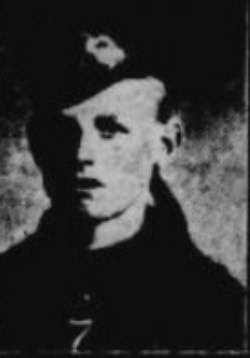
40063 Private
George E. Glenn
2nd Bn. King's Own Scottish Borderers
25th September 1916.
Plot III. C. 8.
George E. Glenn
2nd Bn. King's Own Scottish Borderers
25th September 1916.
Plot III. C. 8.
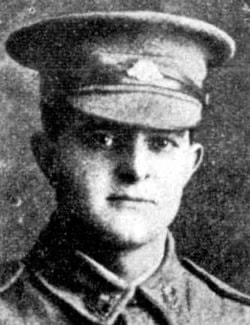
2173 Corporal
Henry Arthur Ihms
38th Bn. Australian Infantry, A.I.F.
24th August 1918.
Plot I. B. 5.
Henry Arthur Ihms
38th Bn. Australian Infantry, A.I.F.
24th August 1918.
Plot I. B. 5.
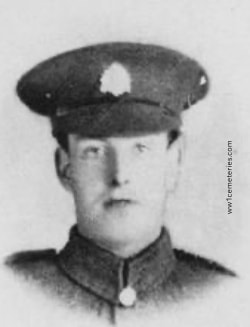
G/78976 Private
Arthur William Pooley
The Queen's (Royal West Surrey Regiment) posted to 1st/24th Bn. London Regiment
22nd August 1918.
Plot II. A. 13.
Arthur William Pooley
The Queen's (Royal West Surrey Regiment) posted to 1st/24th Bn. London Regiment
22nd August 1918.
Plot II. A. 13.
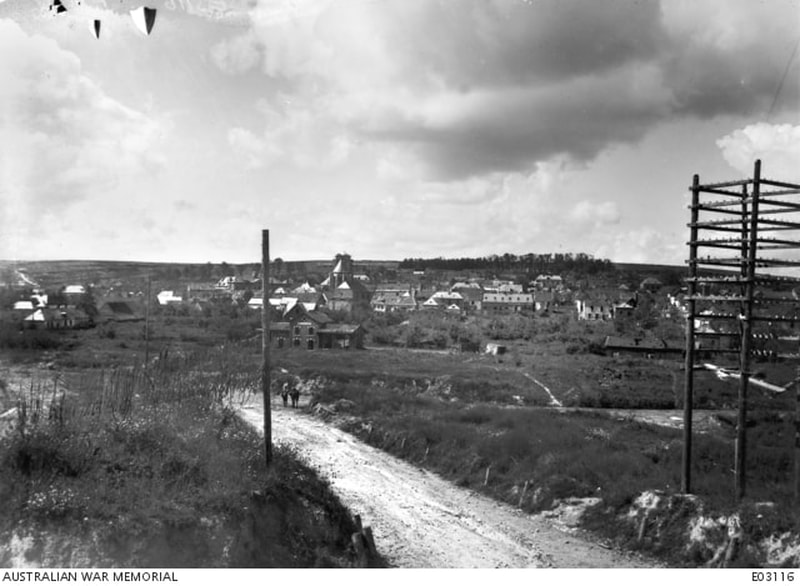
26th August 1918; The village of Bray, photographed from the north east. Bray was taken on the night of 23 August 1918, by a direct frontal surprise attack, of the 40th (Australian) Battalion, assisted on the left flank by the 37th and 38th Battalions. The railway station is in the foreground and directly behind is the ruined church used as a hospital by the enemy. The structure on the right is a field telephone distribution small tower.

